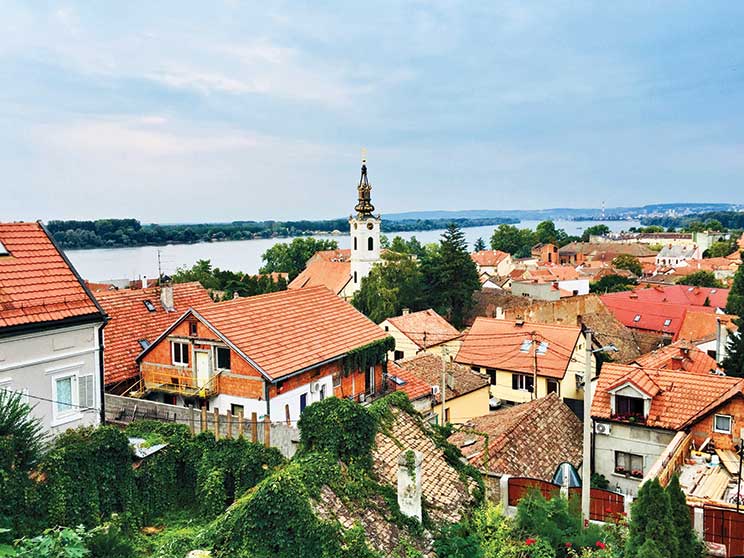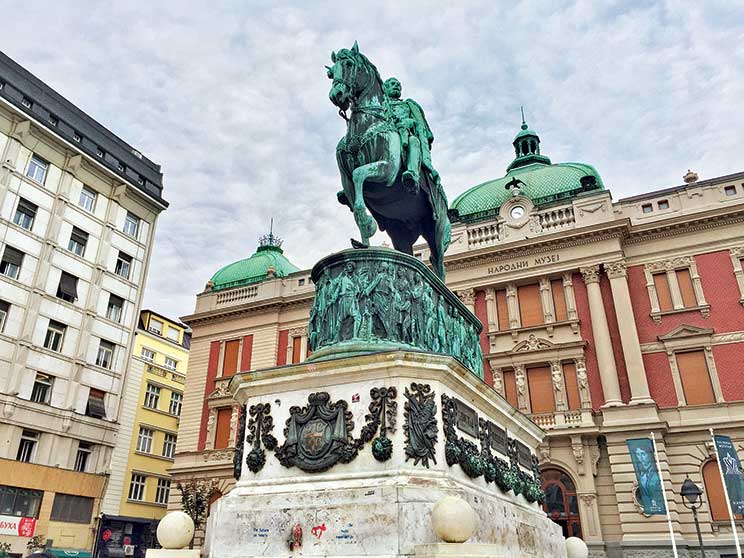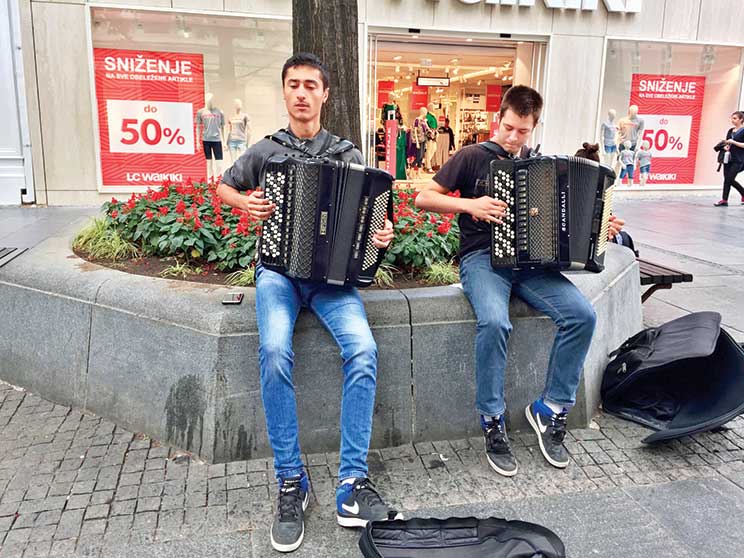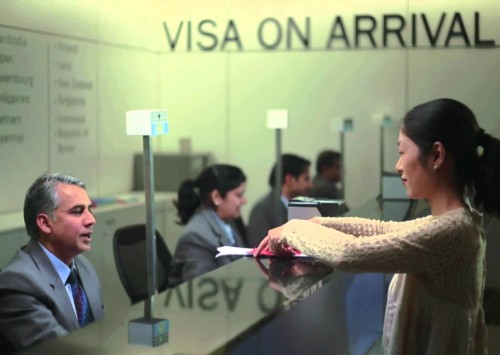A Serbian Encounter
India Outbound
September-October 2018

Serbia hits all the right spots: rich history, culture, and a hip and happening spirit. This is evident from the cool hangout places in its vibrant city centre and floating nightclubs along the picturesque Danube and Sava rivers.
Serbia took just three days to work its charm on me and make me fall in love with it. Here’s why – riverside cafes, cobblestone roads, red roofs, a buzzing city centre, impressive architecture, slow-moving trams and a connection to home with streets named Gandhi and Nehru (yes that’s right) in Belgrade. It doesn’t stop there. Happening party spots in a city spread along the Sava and Danube rivers, wine and honey tasting, the matchbox museum in Sremski Karlovci’s gorgeous countryside and the hidden gem of Novi Sad just a stone’s throw from the capital.
No sleep for nearly 24 hours, a six-hour wait at Istanbul airport and ultimately a delayed flight, but this long haul from New Delhi to Belgrade is worth it. Getting through the airport is a breeze because Indians don’t need a visa to visit Serbia for a stay of up to 30 days, so there is no waiting at queues for immigration or scrambling to get visas on arrival. This is one European destination where you can pack up and go at a minute’s notice without having to bother with the tiresome process of applying for the Schengen visa.

Statue of the prince Mihalio
As we travel to our hotel at night, I groggily listen to the guide plug us into the history of one of the world’s oldest cities, the former capital of Yugoslavia, which broke up into six nations – Bosnia and Herzegovina, Croatia, Macedonia, Montenegro, Serbia and Slovenia. A few hours rest and we are ready to unravel this south-east European country that has seen many empires and witnessed much turbulence, but whose vibrancy and energy testify to its resilience.
A day in the capital city
Inevitably, we start our explorations with the old city called Stari Gard and immediately hit Republic Square, where stands an impressive statue of Prince Mihailo, a 19th century Serbian prince astride a horse. This has turned into such a popular meeting spot that the code word for locals is: “lets meet at the horse.”
It feels like a European plaza – lively with musicians, fountains and open-air cafes. The pedestrian zone, Knez Mihailova Street (Prince Michael Street), houses the main shopping hub in the city, and even as your eye admires the historical buildings, you are magnetically drawn towards the vibrant buskers, stalls and many hangouts. Close by is Kosancic Circle – a cobblestone lane lined with old homes.
We make our way to an iconic landmark, at least for foodies like me – the question mark cafe (?), one of the oldest restaurants in the city for Serbian food. Now what’s behind the name I wonder? It was built by a wealthy merchant in 1823, but after changing hands and names a few times, it came to be known as ‘Kod Saborne crkve’ or ‘at the cathedral church,’ apparently because it is located near a church. But church authorities protested so the owner ended up calling it ‘question mark’. The quirky name has stuck and adds to the overall ambience of the place, which is housed in a quaint building with Balkan architecture.
We soon hit another landmark, the impressive Belgrade Fortress, also known as Kalemegdan Fortress and Park, constructed during Celtic times and witness to over a 100 battles. Standing at the confluence of the Danube and Sava River, the fantastic views beckon you to just sit and stare at the picturesque city sprawled beneath you. Little wonder that the Turks called this spot the Hill of Contemplation.
We quickly make our way to St Sava Cathedral, with a gleaming white marble and granite façade with copper domes. The story of one of the largest Orthodox churches in the world, which has been under construction for nearly a century, reflects the turbulence witnessed by the city in the 20th century. Work on it was stalled for four decades during World War II and the era of Yugoslavia’s socialistic embrace. It restarted in 1986, but halted again as the country began to fall apart during the 1990’s and finally commenced again in 2000. Although the interior remains unfinished, climb down to the stunning crypt at the basement, where a signature of St Sava is set amid beautiful murals and ornate gold chandeliers.
It is time for a history lesson as we head to the Museum of Yugoslavia where Josif Broz Tito, the iconic national leader is buried. There are two parts to the museum – House of Flowers – which has Tito’s and his wife Jovanka’s grave and memorabilia and the Museum Laboratory, which tells you about other leaders. I love the replica of the Blue Train, a historic train that took Tito on many journeys to meet important world leaders. It later came to be known as the Peace Train.
We pass by New Belgrade, also known as Novi Beograd, which mushroomed in the wake of World War II with communist era apartment blocks rising out of the swamps of the Sava. Tennis buffs should keep their eyes peeled here for Novak Djokovic’s restaurant.
Then we are at my favourite part of Belgrade – Zemun – located by the Danube River. It is just like what I had seen in the pictures: cobbled roads, cafes by the river, charming homes and a slow, unhurried pace – the ideal spot to watch the world go by. We walk uphill from the river till Gardos Tower, a 19th century memorial tower from where I get the most breathtaking view of the blue Danube beneath us and a sea of typical European red roofs. This scene sums up picture perfect Belgrade for me.

History at every corner
I come back at night realising that every nook and corner of this city speaks volumes of the past. Streets named Gandhi and Nehru are reminders of India’s excellent relations with this country. Josip Broz Tito and Jawaharlal Nehru were prominent leaders who spearheaded the Non Aligned Movement, which involved efforts to stay away from power blocs. Even the hotel where we are staying – Metropol Palace – has been home to many celebrities such as Elizabeth Taylor, Jack Nicholson, Robert De Niro, Alfred Hitchcock and also India’s first Prime Minister Jawaharlal Nehru.
Then there are bombed-out structures like the hollow shell that remains of the army building, which was bombed by NATO forces in 1999 and has been left as a stark reminder of the strife witnessed just two decades ago. Next day is our date with Novi Sad and Sremski Karlovci. Novi Sad is about 80km from Belgrade and Sremski Karlovci another 15km ahead and both are home to many wineries. We go to a very special one –Museum of Beekeeping Wine Cellar Zivanovic, where the wine cellar goes back more than three centuries. This gives me a taste of Serbian wine, which is apparently quite famous in the region.
We taste about six wines local to the region out of which Bermet is the strongest and sweetest, made with 17 pc alcohol. It is said that Bermet wine was also part of the wine list on the Titanic. Made as white, red and rose, it has 27 herbs and spices. I loved the bold taste and even bought a bottle. In the unusual Bee Museum that displays beehives of all kinds, I was fascinated with one in the shape of a church. The honey here is pure and smooth and besides the regular one there is also honey laced with apricot and sesame – definitely worth a try. This is not the only quirky museum here. At another one called The Match Museum, we look at matchboxes of all kinds from across the region. It’s one of its kind in Serbia.
Bring your dancing shoes
Don’t plan to put your feet up in Belgrade, even when your legs are giving way with all the tramping around. The action is just beginning in a city where the banks of the Sava and Danube rivers are transformed into a happening party scene every night at floating nightclubs and restaurants here. If you have the energy, continue till the wee hours. Even the Bohemian district Skadarlija dons a different look at night with pubs and taverns on either side of the cobbled alley. It’s common to see people selling the national drink rakia on the street.
I come back with my traveller’s spirit satiated from a city that has it all in abundance: history, culture, but more than anything else, energy and vibrancy. Be an early worm and discover it before it is overrun by tourists.










